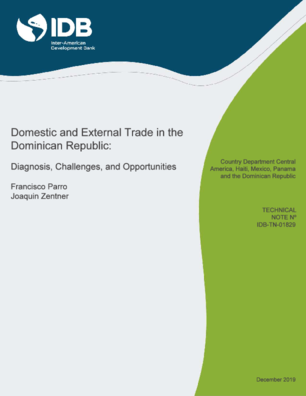Domestic and External Trade in the Dominican Republic: Diagnosis, Challenges, and Opportunities
Date
Dec 2019
A consensus exists in the literature regarding the welfare gains derived from international trade. Motivated by this well-documented fact, this paper provides a diagnosis and evaluation of the challenges and opportunities that a higher level of trade integration offers to the Dominican Republic economy. We document a slowdown in the trade openness level of the economy during recent years. In contrast, during the same period, the countrys trade policy moved towards an overall reduction in tariffs. We conjecture two explanations for this dichotomy. First, the slowdown in trade openness could be explained by an acceleration of GDP growth during recent years, mainly driven by the service economy. We present evidence consistent with this explanation. However, this pattern also suggests that the goods produced locally have become somewhat less attractive in the world economy, possibly due to internal bottlenecks or distortions. To shed light on this second explanation, we use recent methodologies developed in the international trade literature to quantify internal distortions. We also assess the impact of these distortions on the aggregate GDP, relative to the impact of changes in external distortions or trade costs. Two main messages emerge from the empirical analysis. First, the elasticity of real GDP with respect to changes in internal distortions is of an order of magnitude larger than that with respect to external distortions. This finding highlights the importance of studying further different drivers of internal distortions. Second, internal distortions in a given sector spread out to the rest of the economy through input-output linkages and are especially relevant in the non-tradable sectors. We discuss some possible bottlenecks as a source of distortions in the economy at the end of the analysis.




